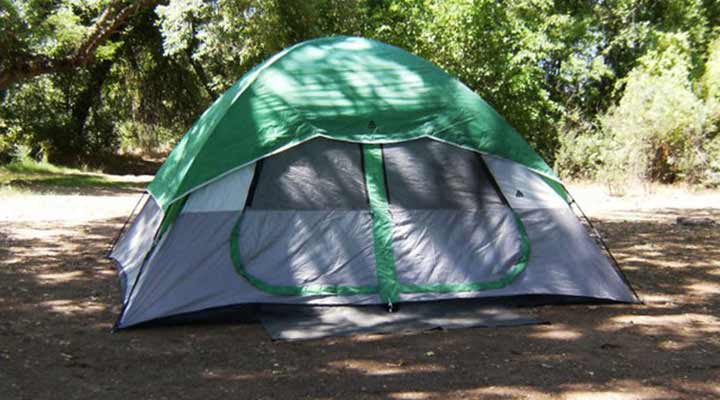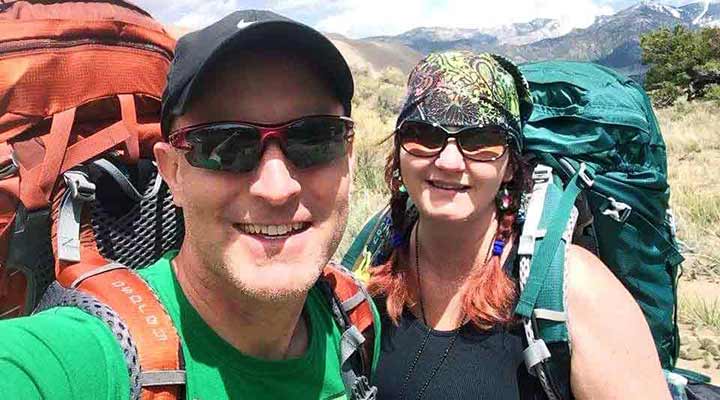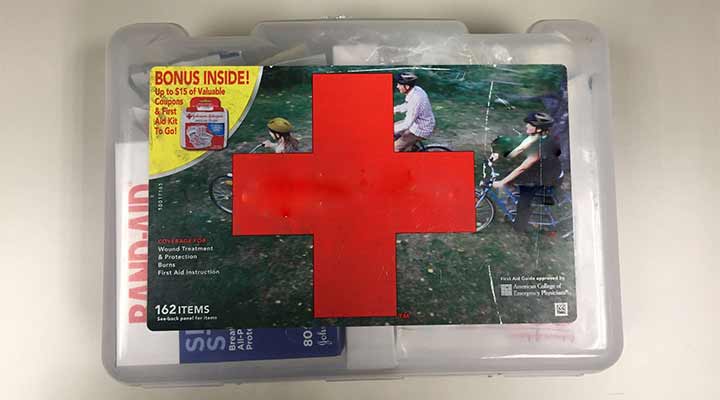
DIY Camping Storage Tips to Conquer the Great Outdoors
Mar 31, 2023 / Alyssa Duranty
Married DIY camping experts Steve and Lisa Ott love the great outdoors almost as much as they love each other. In total, they spend up to three weeks every year in forests and on mountains near their home state of Virginia and beyond.
“Getting out in the middle of nowhere can be really spectacular,”; said Lisa Ott. “There’s no cell service, so when you come back to the world, you never know what it is going to look like.”;
The two adventurers, who post their Ott Mountain excursion videos on YouTube, took the time to share their tips and tricks for storing gear out in the wild, as did a well-versed family camping expert. Read on so you’ll be prepared for your next outdoor vacation.
Store Food in Sealed Containers and Away from Camp

It is important to be aware of the animals that could be lurking where you’re camping and to keep food away from harm.
Some campgrounds and National Parks even have their own rules for storing food, for the safety of visitors and animals. So be sure to check the local guidelines before you travel.
One option is to keep food in bear-proof containers so critters – both big and small – don’t make a snack of your meals or destroy your camping gear while they look for sweet-smelling treats.
“We have canisters and baggies that are smell-proof that we will put our food in,”; said Lisa Ott.
For long-distance trips, the couple eats freeze-dried food, which comes prepackaged in scent-free bags. They suggest trying the beef stroganoff and chili macaroni and cheese flavors!
Or if you’re car camping, depending on the area, you may be able to keep all your food inside your vehicle while you’re sleeping or when you’re off adventuring. Also check to see if the campground has metal lockers for food storage, said Lisa Ott.
Definitely never leave food on the ground while sleeping or after leaving a camp site.
“Animals will rip through your tent to get to that smell,”; added Steve Ott.
Expert Minnesota camper Ryan Cunningham, who writes about camping with his five kids on his website Beyond the Tent, said bears can (and will) climb up a tree for food, so when he stores meals in the wild, he does it suspended between two trees.
“You want your food in a place that is as hard to get to as possible, because bears can be brilliant,”; said Cunningham.
Pack Light and Bring a Way to Wash Your Clothes
With five kids in tow, Cunningham packs as little when camping in the famous Boundary Waters Canoe Area. After all, it’s the great outdoors, not a fashion show.
“Pack as few clothes as humanly possible,”; said Cunningham. “One pair pants, one pair of shorts and two shirts, so you’re always wearing something dry.”;
For longer trips, Cunningham carries a specialized bag he can use to wash clothes during trips.
“It cuts down on your packing and we use it to store clothes between washes,”; he said. “If you’re wearing filthy clothes for a couple days, you’ll start to feel it.”;
If you don’t want to wash clothes on-the-go, consider bringing an extra bag or two to keep your stored clothes clean during the trip and a separate bag for wet clothes.
Carry Waterproof First-Aid Containers
Lisa Ott got the nickname “Bone Crusher”; after she fell and broke her arm on wet rocks during a backpacking trip. Her arm had to be taped up before the couple made it to a hospital, so she can’t stress enough how important it is to properly store a first aid kit.
“Keep first aid supplies in a waterproof container, so the Brand-Aids and tape won’t get damaged in the rain or if dropped in the water,”; she said.
To avoid forgetting anything important and to save money, Cunningham purchased a prepacked kit that came in a durable, waterproof container.
“It comes in a sealed, plastic box and has all the items you need,”; he said.
He warned to leave fragrant lotions, creams and deodorant at home, as anything with a scent will get the wild animals curious.
“People are only going to judge you if you smell too nice while camping,”; he laughed.








